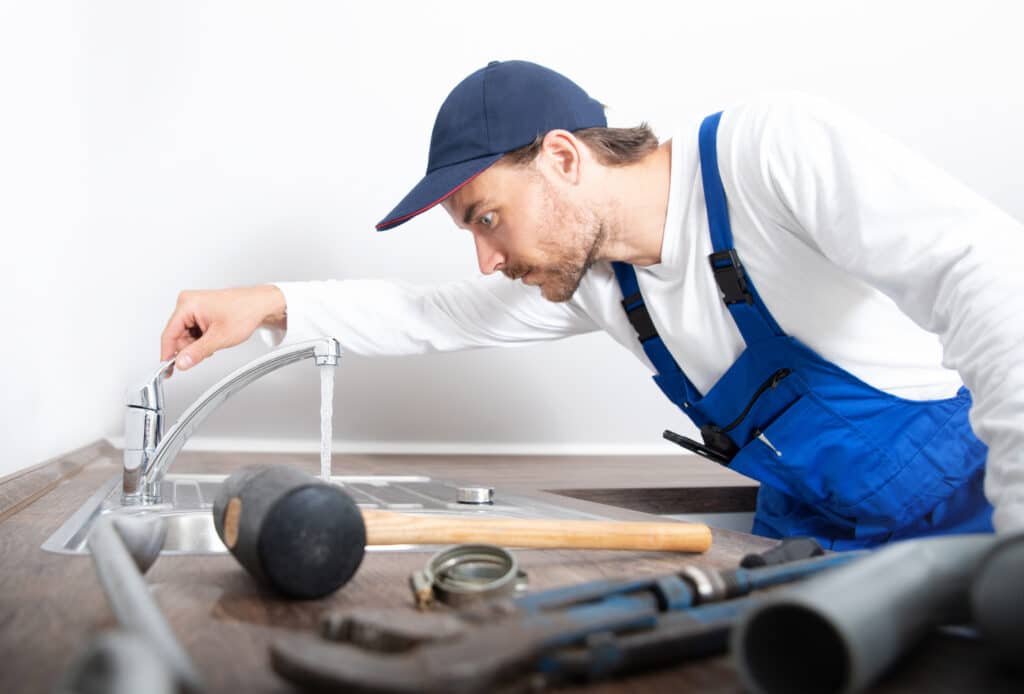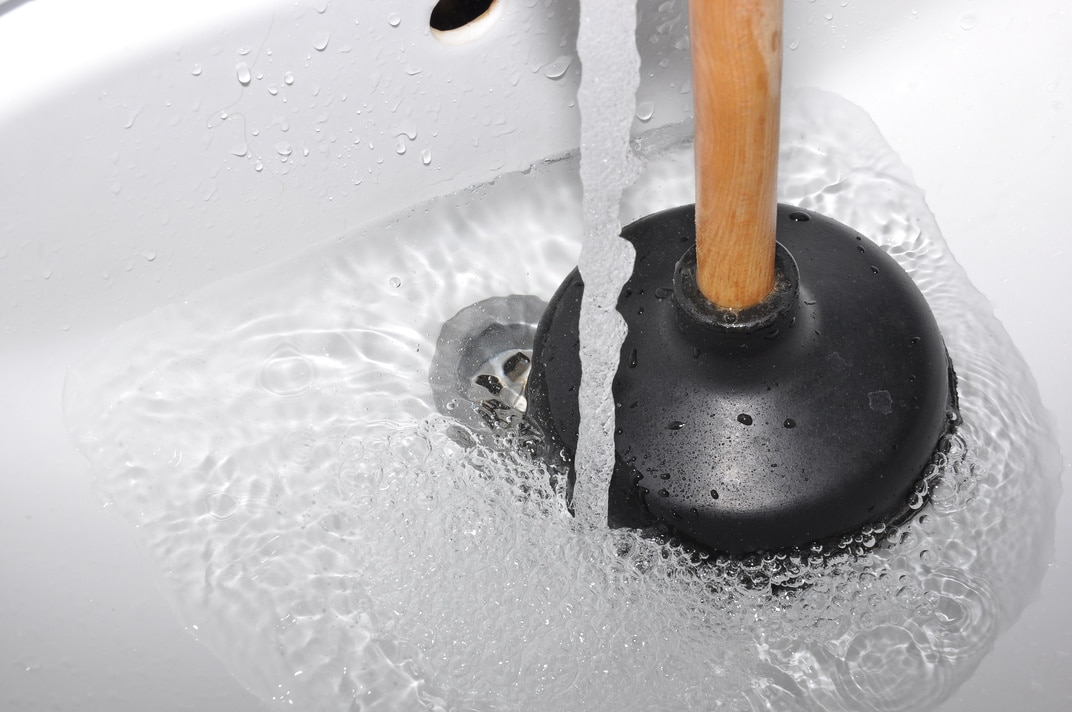
There’s nothing worse than realising your sink is blocked; as the water refuses to go down it can begin to smell unpleasant and be a nuisance for anyone in the household to use. It’s a common problem but a surprising amount of people don’t know where to start when unblocking a sink. You can tackle sink blockages with or without a plunger, and our step by step guides will help you assess the problem before having to call in a professional.
Unblocking a sink with a plunger

What you will need:
• A plunger!
• A towel and/or large plastic bowl for any potential water spillage
• Duct tape (or an old dishcloth) to block the overflow
• A cup
• Rubber gloves
1) Empty the sink and prepare the area
Place your towel on the ground near your sink to protect against any water overflow and have a bowl ready for any further spillages. Use your cup to empty out any water still in the sink. If you still have some water lurking, pop on rubber gloves to check if there is anything obstructing the plughole.
2) Cover the overflow
Take your duct tape, or dishcloth, and use this to cover the overflow completely. Usually, this is the hole situated underneath or opposite the taps. Make sure it is completely airtight, or the plunger won’t work.
3) Time to plunge!
Place the plunger directly over the plughole and run the taps to get a couple of inches of water around the plunger and sink. Use both your hands to firmly push the plunger up and down. By forcing air in and out of the pipe, the plunger should be able to break up any blockages. You should hear the air begin to pass as the blockage clears, but if this doesn’t work, or you don’t have a plunger, there are other simple ways to unblock a sink, so don’t despair!
Unblocking a sink without a plunger

If the above doesn’t work, or you don’t have a plunger, there are lots of simple, cost-effective options.
1) Bicarbonate of soda and white vinegar
Most people have these lurking in the back of their cupboards, and if not, they are affordable and easy to find in most supermarkets. Pour a teaspoon of the bicarbonate of soda directly down the plughole (ensure it is cleared of water and debris first), then follow straight away with a cup of white vinegar. The two will mix together to fizz away at the blockage. After 5-10 minutes, pour some boiling water from your kettle down the plughole to flush it out.
2) Washing powder
You will need biological washing powder (or soda crystals), but this method is very simple; as above, pour a teaspoon of powder down the plughole, followed by a full kettle of boiling water. This works particularly well on build-ups of fat or grease from food blockages.
3) A long wire
You should be able to get hold of long, flexible wire tools from most hardware shops. Carefully feed it down the plughole until you can feel the blockage in the pipe. You should be able to clear the blockage by manoeuvring the wire.
4) Try a chemical drain cleaner
Drain cleaners can be pricey, but they often do the job for a short term fix. Follow the instructions carefully and ensure the rest of your household know a drain cleaner is down the sink so they don’t accidentally use it while it’s clearing the blockage.
5) Unscrew the U-bend by hand
This isn’t as fiddly as it sounds but it does require preparation. Ensure the cupboard under the sink is cleared and have towels and / or a bowl or bucket to hand to catch any water. Make sure you have an apron on or old clothes too. Put on your rubber gloves and slowly unscrew the U-bend (you may need a wrench for this). It’s a good idea to take a picture before and as you go so you have a reference for when you put it back together after. Once the U-bend is off, clear out the pipework and have something to catch any debris, especially if the blockage has been caused by items such as jewellery or hair clips!
If after these steps your sink is still showing signs of being blocked, now is the time to call in the professionals. Our skilled team will be able to get your sinks flowing in a jiffy!
